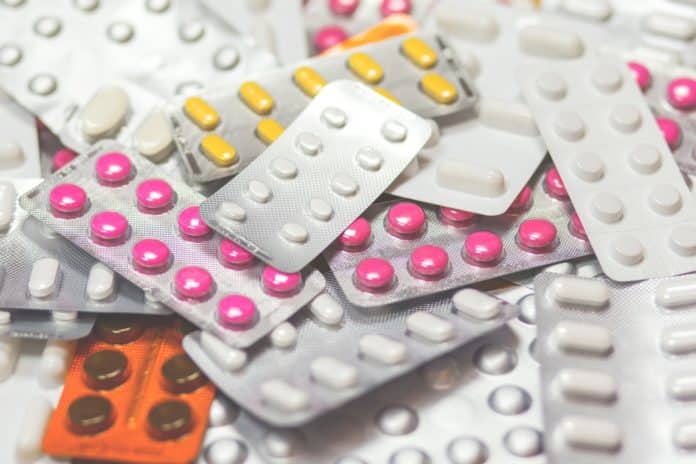Last Updated on November 27, 2023 by The Health Master
Rare Diseases
Rare diseases often pose significant challenges due to their low prevalence and the high cost associated with their treatment. However, a recent development in India brings a ray of hope.
The Union Health Ministry officials announced that medicines for four rare diseases are now available at drastically cheaper rates, thanks to the efforts of Indian pharmaceutical companies.
The Focus on Rare Diseases
1. Prioritizing Action
The Ministry has prioritized action related to 13 rare diseases, including sickle cell anaemia.
This strategic focus aims to address the healthcare needs of a niche population, ensuring that effective treatments are accessible.
2. Approved and Indigenously Manufactured
Among the highlighted rare diseases are:
- Tyrosinemia Type 1,
- Gaucher’s Disease,
- Wilson’s Disease, and
- Dravet-Lennox Gastaut Syndrome.
These diseases now have approved drugs that are being manufactured indigenously, marking a significant milestone in healthcare accessibility.
Specific Drugs and Cost Reductions
3. Tyrosinemia Type 1
The annual cost of Nitisinone capsules, used in the treatment of Tyrosinemia Type 1, is expected to be reduced to one-hundredth of the price of the imported medicine.
For instance, the imported capsule costs Rs 2.2 crore annually, while the domestically manufactured capsules will be available for just Rs 2.5 lakh.

4. Gaucher’s Disease
The cost of the imported Eliglustat capsules, used in the treatment of Gaucher’s Disease, ranges from Rs 1.8-3.6 crore per annum.
However, with indigenous manufacturing, the capsules will be available for just Rs 3-6 lakh per annum, significantly reducing the financial burden on patients.
5. Wilson’s Disease
For Wilson’s Disease, the imported Trientine capsules cost Rs 2.2 crore per annum.
The indigenously manufactured alternative will be available for Rs 2.2 lakh, offering a more affordable solution for patients.
6. Dravet-Lennox Gastaut Syndrome
The imported Cannabidiol (oral solution) used in the treatment of Dravet-Lennox Gastaut Syndrome comes at a staggering Rs 7-34 lakh per annum.
However, due to indigenous manufacturing, it will be available at 1-5 lakh per annum, providing relief to affected individuals and their families.
7. Sickle Cell Anemia
The commercial supply of Hydroxyurea Syrup for sickle cell anemia is expected to begin by March 2024, with a tentative price of Rs 405 per bottle.
This is a significant reduction from the current cost of 840 USD (Rs 70,000) per 100 ml from abroad.
Future Prospects and Approval Process
8. Ongoing Approvals
The positive momentum continues as four more drugs for three diseases are under process for approval.
The following medicines are likely to be available by April 2024:
- Tablet Sapropterin for Phenylketonuria,
- Tablet Sodium Phenyl Butyrate,
- Tablet Carglumic Acid for Hyperammonemia, and
- Capsule Miglustat for Gaucher’s Disease.
9. Collaborative Efforts
The journey began in July 2022, with extensive discussions involving academia, pharmaceutical industries, organizations, CDSCO, and the Department of Pharmaceuticals.
This collaborative effort led to the prioritization of 13 rare diseases, and subsequent interactions with drug manufacturers resulted in the approval of these drugs, accompanied by substantial price reductions.
Understanding Rare Diseases
10. Definition and Prevalence
A rare disease is characterized by its low prevalence, affecting a small number of people. Collectively, they afflict 6-8 per cent of the population in any country at any given time.
In India, there could be 8.4-10 crore cases, with nearly 80 per cent of these diseases being genetic in nature.
FAQs
Q1: How did the initiative to reduce drug prices for rare diseases begin?
The initiative began in July 2022, with collaborative discussions involving academia, pharmaceutical industries, organizations, CDSCO, and the Department of Pharmaceuticals. This led to the prioritization and approval of drugs for 13 rare diseases.
Q2: Which rare diseases are currently covered under the initiative?
The initiative prioritizes action related to 13 rare diseases, including Tyrosinemia Type 1, Gaucher’s Disease, Wilson’s Disease, Dravet-Lennox Gastaut Syndrome, and sickle cell anaemia.
Q3: How much will the domestically manufactured drugs cost in comparison to imported alternatives?
The cost reduction is substantial. For instance, the annual cost of Nitisinone capsules for Tyrosinemia Type 1 will be reduced to one-hundredth of the price of the imported medicine.
Q4: When can we expect the approval of the additional drugs under process?
Four more drugs for three diseases are under process for approval and are likely to be available by April 2024.
Q5: What is the prevalence of rare diseases in India?
Collectively, rare diseases afflict 6-8 per cent of the population in India at any given time, with an estimated 8.4-10 crore cases. Nearly 80 per cent of these diseases are genetic in nature.
Disclaimer: This article contains information derived from the source mentioned below. Our team utilized an AI language model to rewrite and present the news or article in a unique format.
Videography During Inspections at Pharma Firms: Proposal
Drugs Control Dept’s fight against Antimicrobial Resistance: Karnataka
Excipient Equation: Balancing Safety and Quality in Drug Formulations
Govt Job: For Research Scientist in CDSCO, Pay upto Rs. 84k pm
Pharma Innovation in India: A Call to Action – DCGI
Pharma Company Faces Environmental Crisis
Transforming Clinical Research Sector in India
Gist of 31 Chapters on Schedule M
For informative videos by The Health Master, click on the below YouTube icon:
For informative videos on Medical Store / Pharmacy, click on the below YouTube icon:
For informative videos on the news regarding Pharma / Medical Devices / Cosmetics / Homoeopathy etc., click on the below YouTube icon:
For informative videos on consumer awareness, click on the below YouTube icon:









